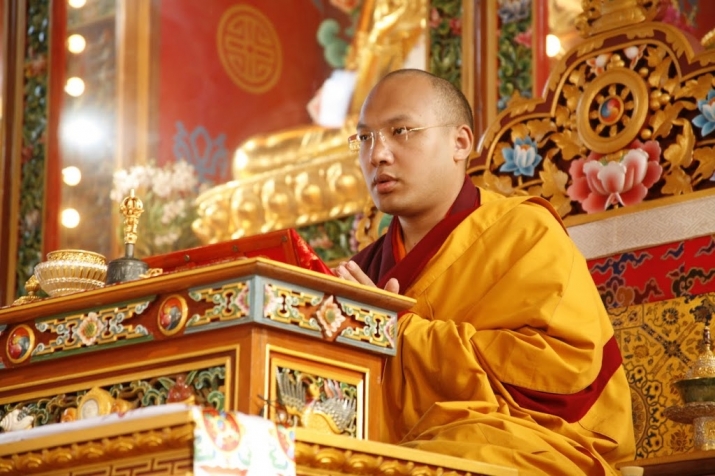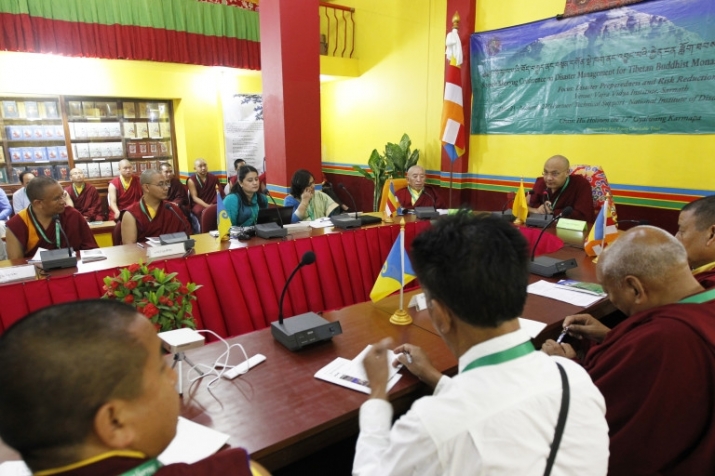NEWS
His Holiness the Karmapa Trains Buddhist Monastics in Disaster Management
 His Holiness the 17th Karmapa. From journal.phong.com
His Holiness the 17th Karmapa. From journal.phong.comHis Holiness the 17th Karmapa, Ogyen Trinley Dorje, yesterday convened the 7th Khoryug Conference for Tibetan Buddhist Monasteries and Nunneries, aiming to train monks and nuns in the Himalayan region in disaster management and risk reduction and to provide monastic communities with disaster response plans and expertise.
Khoryug, which means “environment” in Tibetan, is an association of more than 50 Tibetan Buddhist monastic communities in Bhutan, India, and Nepal that work on environmental issues under the auspices of His Holiness the Karmapa. This year’s conference, titled “Disaster Preparedness and Risk Reduction,” brings together more than 70 monastic delegates representing 29 monasteries and nunneries at the Vajra Vidya Institute in the town of Sarnath in the northeastern Indian state of Uttar Pradesh from 21–24 March.
Over the course of the four-day gathering, the Karmapa aims to prepare monks and nuns to lead local communities in response and recovery activities in the event of potential disasters, such as earthquakes, fires, and floods, and to train them to become risk-reduction educators to ensure the safety of communities, calling on the insights and lessons learned from monastic communities that responded to last year’s devastating earthquakes in Nepal. The conference will include expert presentations directed by Prof. Rakesh Kumar Singh and Prof. Chandrani Bandyopadhyay from the National Institute of Disaster Management of the Government of India, group discussions, and hands-on training.
The Himalayan region has experienced a number of severe earthquakes in the past five years: the 2011 Sikkim quake, which had a recorded moment magnitude of 6.9 and in which 111 died, the 2015 Nepal quakes, which had a recorded magnitude of between 7.3 and 8.1 and killed more than 8,800 people, and the 6.7 magnitude Manipur quake in January this year, which killed at least 11 people. Disaster management experts and seismologists have warned that the recent earthquakes have weakened tectonic plates that were already cracked, raising the likelihood of more severe earthquakes in the region.
In the days and weeks following the catastrophic Nepal earthquakes, eight Khoryug monasteries and nunneries provided assistance to more than 12,000 families in 15 districts of Nepal. More than 100 families were offered shelter in monastic compounds in the immediate aftermath and a further 2,200 people received medical treatment from doctors hired by the monasteries and nunneries. Members of these monastic communities also joined rescue teams, helped to clear rubble from communities and roads, donated blood, volunteered at hospitals and schools, and organized activities for children whose schools had been destroyed.
 The first day of the 7th Khoryug Conference for Tibetan Buddhist Monasteries and Nunneries. From khoryug.info
The first day of the 7th Khoryug Conference for Tibetan Buddhist Monasteries and Nunneries. From khoryug.infoDuring the first day of the conference, Khenpo Chokey of Pullahari Monastery in Nepal provided firsthand experience and advice on disaster relief from the Nepal quakes for the assembled monastic representatives. He explained that while the first instinct of many people may be to rush to the aid of those in need, the 2015 earthquakes had taught them the benefits of an organized relief effort. “We must not just rush into the situation without proper planning and preparedness. We must embrace compassion, wisdom and patience in our rescue and relief actions,” he said. (Khoryug)
Sacred Earth founder and director Dekila Chungyalpa highlighted other recent Khoryug activities, including the planting of more than 100,000 saplings in 2015, while presentations from the Khoryug Country Coordinators for Bhutan, India, and Nepal illustrated Khoryug projects in these countries over the last year, including organic gardening, rainwater harvesting, and waste recycling.
His Holiness the Karmapa founded Khoryug in 2009 to address environmental challenges. Since then, the number of participating monasteries and nunneries from various Tibetan Buddhist traditions in the Himalayan region has grown from 22 to 55. This year’s conference was organized in partnership with the National Institute of Disaster Management of the Government of India.
See more
Press Release (Karmapa)
Day One of 7th Khoryug Conference (Khoryug)














